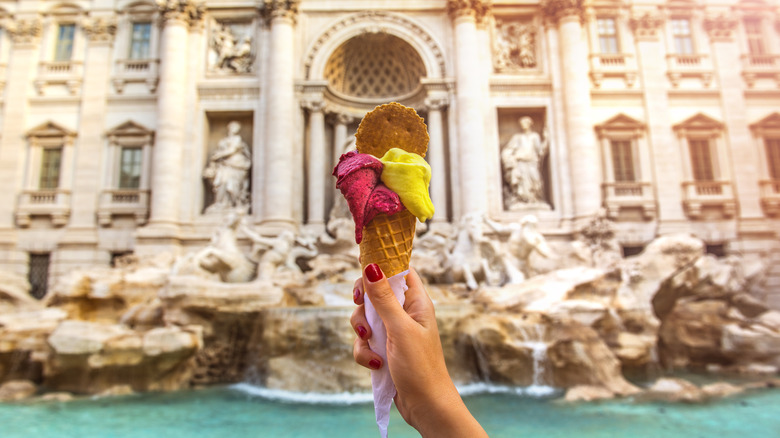Rick Steves Loves These Tours For A Culturally Immersive Dining Experience In Europe
Rick Steves is one of the world's foremost advocates for making cultural immersion part of your vacation. His travel philosophy is all about diving into the traditions, customs, and cultural details of your destination to deepen the experience and get the most out of any trip, whether it's staying in unique, "characteristic" hotels in Europe or learning a few words and phrases in the local language. One of his unexpected secrets to appreciate Europe's best sights is to book yourself or your group onto a food tour. While food tours might seem somewhat mainstream or overly touristy, Steves says on his website, "In my quest to experience Europe as the locals do — intimately and on all fronts — I make a point to eat well." Food is one of the most important and significant aspects of European culture, and understanding and experiencing the cuisine of a country is a great way to get closer to the mindset, history, and traditions of the place. And organized food tours make it easy to sample and learn about local dishes.
Steves continues, "These days, my job of eating well is getting easier all the time. Food tours and cooking classes have become a big deal all over Europe." He sees a food tour as a way to combine a meal with sightseeing, learn fascinating things you wouldn't be able to find out any other way, and make new friends — ideal if you are looking to overcome the downsides of solo travel.
The joy of food tours
For Rick Steves, one of the best parts of a food tour is the way it combines sightseeing and eating. While the best tours tend to be pricey — "a bit more than the cost of a splurge dinner ($70–100)," he says — you can expect to be full by the end and feel that you got your money's worth. Steves refers to the food tour experience as "a mobile meal" where you can learn a lot, make friends with other travelers, and eat well.
But a good food tour isn't just a chance to try local delicacies. The guidebook author describes a tour he took in Paris where he learned to identify the sound that a perfectly made bread crust should make when broken, as well as the French laws around what constitutes a true baguette. Steves also learned how proper butter croissants are straight, not curvy. Some things you can only find out from an expert, or, better yet, straight from the horse's mouth, by asking the people who actually make the food!
Food tours are also a way to discover how and where locals actually eat. According to Steves, locals in Paris often end up in a traiteur, a high-end deli where they can buy food to go, for example. Experiencing the eating styles and habits of locals with an insider is a guaranteed way to get closer and become more familiar with your vacation destination.
How to choose the best food tour
As with all guided tours and tourist experiences in general, not all food tours are created equal. According to Rick Steves, food tours should "highlight unique, local experiences or historical themes" and should offer insight into how food in a destination impacts its culture and vice versa. As a result, the travel guru recommends skipping the bigger, more expensive, and slower tours for smaller options that "move at a brisk pace and max out at eight or ten people."
Smaller tours allow for a more boutique, curated experience, with far more opportunity to ask questions and get the most out of your guide's expert knowledge. But perhaps most importantly, according to Steves, a smaller group "means you can squeeze into small shops and boutique restaurants ... giving you a great glimpse into daily life in less-seen parts of a city" and a closer look into the places that only the locals know about.


